1. Sions JM, Elliott JM, Pohlig RT, Hicks GE. Trunk muscle characteristics of the multifidi, erector spinae, psoas, and quadratus lumborum in older adults with and without chronic low back pain. J Orthop Sports Phys Ther. 2017; 47(3):173–179. PMID:
28158957.
2. Hansen L, de Zee M, Rasmussen J, Andersen TB, Wong C, Simonsen EB. Anatomy and biomechanics of the back muscles in the lumbar spine with reference to biomechanical modeling. Spine (Phila Pa 1976). 2006; 31(17):1888–1899. PMID:
16924205.
3. Seo YG, Park WH, Lee CS, Kang KC. Lumbar extensor muscle size and isometric muscle strength in women with symptomatic lumbar degenerative diseases. Asian Spine J. 2018; 12(5):943–950. PMID:
30213179.
4. Jun HS, Kim JH, Ahn JH, Chang IB, Song JH, Kim TH, et al. The effect of lumbar spinal muscle on spinal sagittal alignment: evaluating muscle quantity and quality. Neurosurgery. 2016; 79(6):847–855. PMID:
27244469.
5. Bok DH, Kim J, Kim TH. Comparison of MRI-defined back muscles volume between patients with ankylosing spondylitis and control patients with chronic back pain: age and spinopelvic alignment matched study. Eur Spine J. 2017; 26(2):528–537. PMID:
27885474.
6. He K, Head J, Mouchtouris N, Hines K, Shea P, Schmidt R, et al. the implications of paraspinal muscle atrophy in low back pain, thoracolumbar pathology, and clinical outcomes after spine surgery: a review of the literature. Global Spine J. 2020; 10(5):657–666. PMID:
32677568.
7. Fortin M, Lazáry À, Varga PP, Battié MC. Association between paraspinal muscle morphology, clinical symptoms and functional status in patients with lumbar spinal stenosis. Eur Spine J. 2017; 26(10):2543–2551. PMID:
28748488.
8. Kim WJ, Kim KJ, Song DG, Lee JS, Park KY, Lee JW, et al. Sarcopenia and back muscle degeneration as risk factors for back pain: a comparative study. Asian Spine J. 2020; 14(3):364–372. PMID:
31906616.
9. Kwon JW, Moon SH, Park SY, Park SJ, Park SR, Suk KS, et al. Lumbar spinal stenosis: review update 2022. Asian Spine J. 2022; 16(5):789–798. PMID:
36266248.
10. Mobbs RJ, Phan K, Malham G, Seex K, Rao PJ. Lumbar interbody fusion: techniques, indications and comparison of interbody fusion options including PLIF, TLIF, MI-TLIF, OLIF/ATP, LLIF and ALIF. J Spine Surg. 2015; 1(1):2–18. PMID:
27683674.
11. Duman F, Serarslan Y, Ozturk F, Yucekaya B, Atci N. Change in the dimensions of the lumbar area muscles after surgery: MRI analysis. North Clin Istanb. 2020; 7(5):478–486. PMID:
33163884.
12. Fan S, Hu Z, Zhao F, Zhao X, Huang Y, Fang X. Multifidus muscle changes and clinical effects of one-level posterior lumbar interbody fusion: minimally invasive procedure versus conventional open approach. Eur Spine J. 2010; 19(2):316–324. PMID:
19876659.
13. Ortega-Porcayo LA, Leal-López A, Soriano-López ME, Gutiérrez-Partida CF, Ramírez-Barrios LR, Soriano-Solis S, et al. Assessment of paraspinal muscle atrophy percentage after minimally invasive transforaminal lumbar interbody fusion and unilateral instrumentation using a novel contralateral intact muscle-controlled model. Asian Spine J. 2018; 12(2):256–262. PMID:
29713406.
14. He W, He D, Sun Y, Xing Y, Liu M, Wen J, et al. Quantitative analysis of paraspinal muscle atrophy after oblique lateral interbody fusion alone vs. combined with percutaneous pedicle screw fixation in patients with spondylolisthesis. BMC Musculoskelet Disord. 2020; 21(1):30. PMID:
31937277.
15. Lee JH, Kong CB, Yang JJ, Shim HJ, Koo KH, Kim J, et al. Comparison of fusion rate and clinical results between CaO-SiO
2-P
2O
5-B
2O
3 bioactive glass ceramics spacer with titanium cages in posterior lumbar interbody fusion. Spine J. 2016; 16(11):1367–1376. PMID:
27498334.
16. Schwender JD, Holly LT, Rouben DP, Foley KT. Minimally invasive transforaminal lumbar interbody fusion (TLIF): technical feasibility and initial results. J Spinal Disord Tech. 2005; 18(Suppl):S1–S6. PMID:
15699793.
17. Faur C, Patrascu JM, Haragus H, Anglitoiu B. Correlation between multifidus fatty atrophy and lumbar disc degeneration in low back pain. BMC Musculoskelet Disord. 2019; 20(1):414. PMID:
31488112.
18. Bridwell KH, Lenke LG, McEnery KW, Baldus C, Blanke K. Anterior fresh frozen structural allografts in the thoracic and lumbar spine. Do they work if combined with posterior fusion and instrumentation in adult patients with kyphosis or anterior column defects? Spine (Phila Pa 1976). 1995; 20(12):1410–1418. PMID:
7676341.
19. Wallwork TL, Stanton WR, Freke M, Hides JA. The effect of chronic low back pain on size and contraction of the lumbar multifidus muscle. Man Ther. 2009; 14(5):496–500. PMID:
19027343.
20. Kjaer P, Bendix T, Sorensen JS, Korsholm L, Leboeuf-Yde C. Are MRI-defined fat infiltrations in the multifidus muscles associated with low back pain? BMC Med. 2007; 5(1):2. PMID:
17254322.
21. Kim JB, Park SW, Lee YS, Nam TK, Park YS, Kim YB. The effects of spinopelvic parameters and paraspinal muscle degeneration on S1 screw loosening. J Korean Neurosurg Soc. 2015; 58(4):357–362. PMID:
26587190.
22. Kim JY, Ryu DS, Paik HK, Ahn SS, Kang MS, Kim KH, et al. Paraspinal muscle, facet joint, and disc problems: risk factors for adjacent segment degeneration after lumbar fusion. Spine J. 2016; 16(7):867–875. PMID:
26970600.
23. Zhao Y, Huang M, Serrano Sosa M, Cattell R, Fan W, Li M, et al. Fatty infiltration of paraspinal muscles is associated with bone mineral density of the lumbar spine. Arch Osteoporos. 2019; 14(1):99. PMID:
31617017.
24. Beasley LE, Koster A, Newman AB, Javaid MK, Ferrucci L, Kritchevsky SB, et al. Inflammation and race and gender differences in computerized tomography-measured adipose depots. Obesity (Silver Spring). 2009; 17(5):1062–1069. PMID:
19165157.
25. Somerson JS, Hsu JE, Gorbaty JD, Gee AO. Classifications in brief: Goutallier classification of fatty infiltration of the rotator cuff musculature. Clin Orthop Relat Res. 2016; 474(5):1328–1332. PMID:
26584800.
26. Powell SN, Lilley BM, Peebles AM, Dekker TJ, Warner JJ, Romeo AA, et al. Impact of fatty infiltration of the rotator cuff on reverse total shoulder arthroplasty outcomes: a systematic review. JSES Rev Rep Tech. 2022; 2(2):125–130.
27. Maly MR, Calder KM, Macintyre NJ, Beattie KA. Relationship of intermuscular fat volume in the thigh with knee extensor strength and physical performance in women at risk of or with knee osteoarthritis. Arthritis Care Res (Hoboken). 2013; 65(1):44–52. PMID:
23044710.
28. Zhao G, Liu C, Chen K, Chen F, Lyu J, Chen J, et al. Predictive value of adipose to muscle area ratio based on MRI at knee joint for postoperative functional outcomes in elderly osteoarthritis patients following total knee arthroplasty. J Orthop Surg. 2020; 15(1):494.
29. Kim GU, Park WT, Chang MC, Lee GW. Diagnostic technology for spine pathology. Asian Spine J. 2022; 16(5):764–775. PMID:
36266250.
30. Welch N, Moran K, Antony J, Richter C, Marshall B, Coyle J, et al. The effects of a free-weight-based resistance training intervention on pain, squat biomechanics and MRI-defined lumbar fat infiltration and functional cross-sectional area in those with chronic low back. BMJ Open Sport Exerc Med. 2015; 1(1):e000050.
31. Heo JY, Park JH, Lim SA, Shim SW, Choi YS. Feasibility of using fat degeneration of lumbar extensor muscle as an alternative diagnostic criterion for sarcopenia in patients with osteoporotic vertebral fractures. Asian Spine J. 2020; 14(3):320–326. PMID:
31711061.
32. Choi MK, Kim SB, Park BJ, Park CK, Kim SM. Do trunk muscles affect the lumbar interbody fusion rate?: Correlation of trunk muscle cross sectional area and fusion rates after posterior lumbar interbody fusion using stand-alone cage. J Korean Neurosurg Soc. 2016; 59(3):276–281. PMID:
27226860.
33. Lee CS, Chung SS, Choi SW, Yu JW, Sohn MS. Critical length of fusion requiring additional fixation to prevent nonunion of the lumbosacral junction. Spine (Phila Pa 1976). 2010; 35(6):E206–E211. PMID:
20195201.
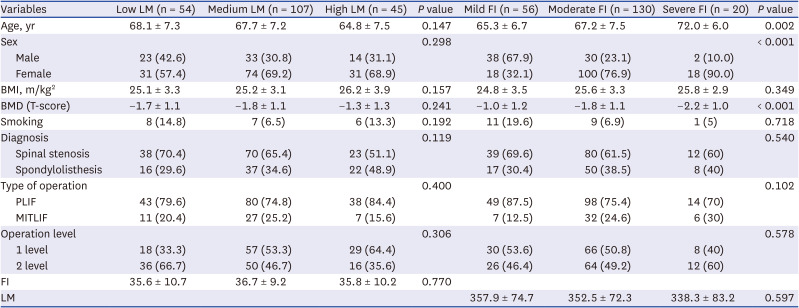
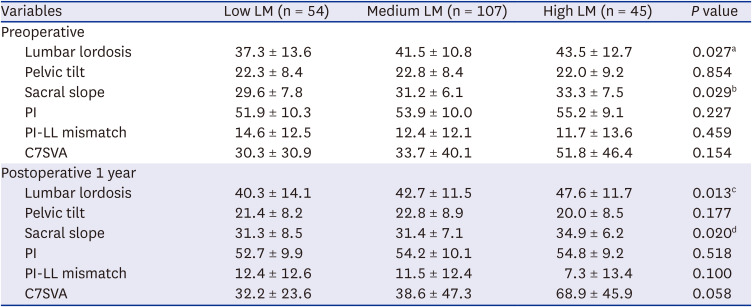
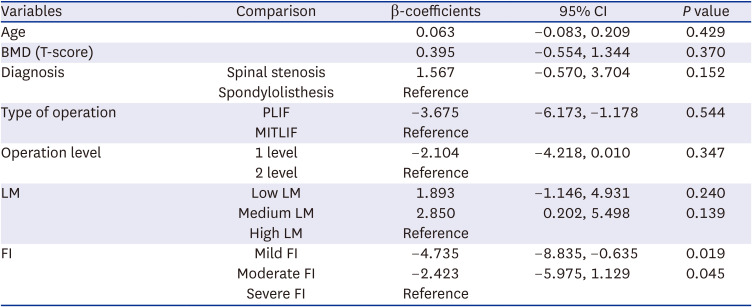




 PDF
PDF Citation
Citation Print
Print



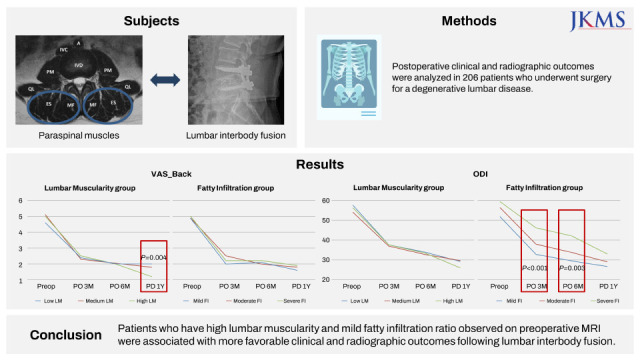
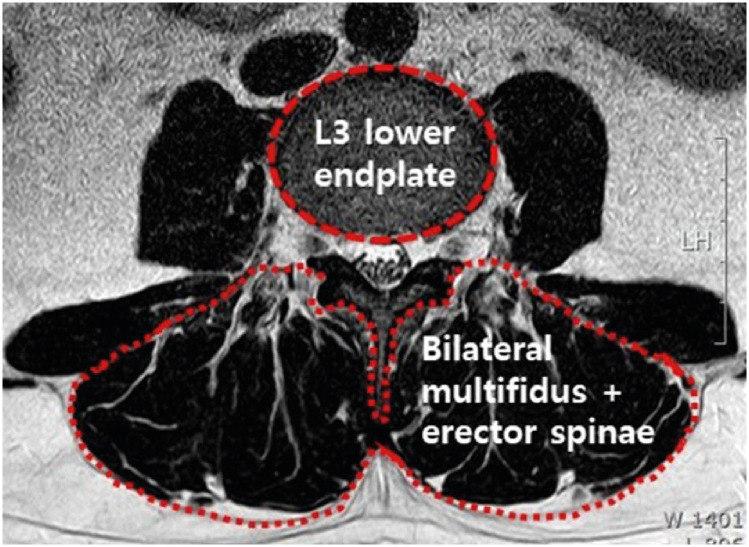
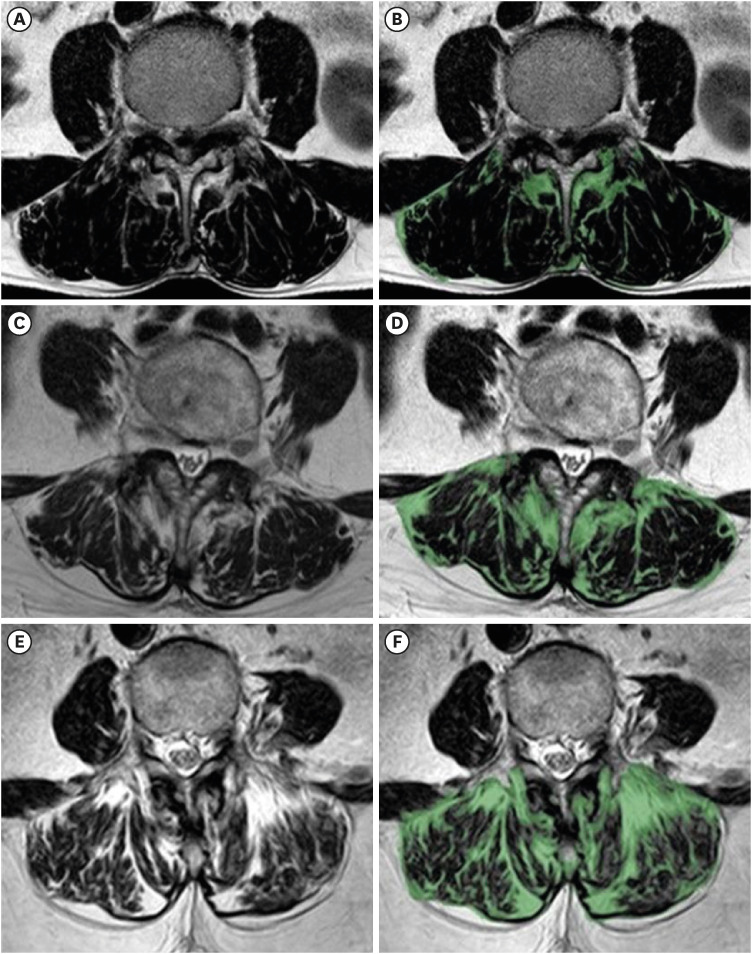
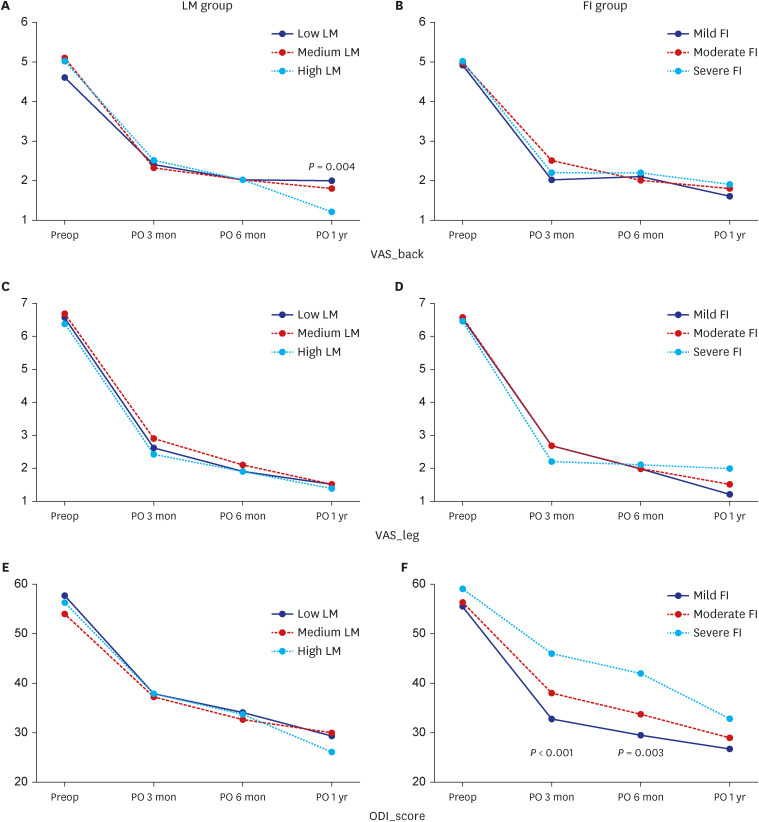
 XML Download
XML Download